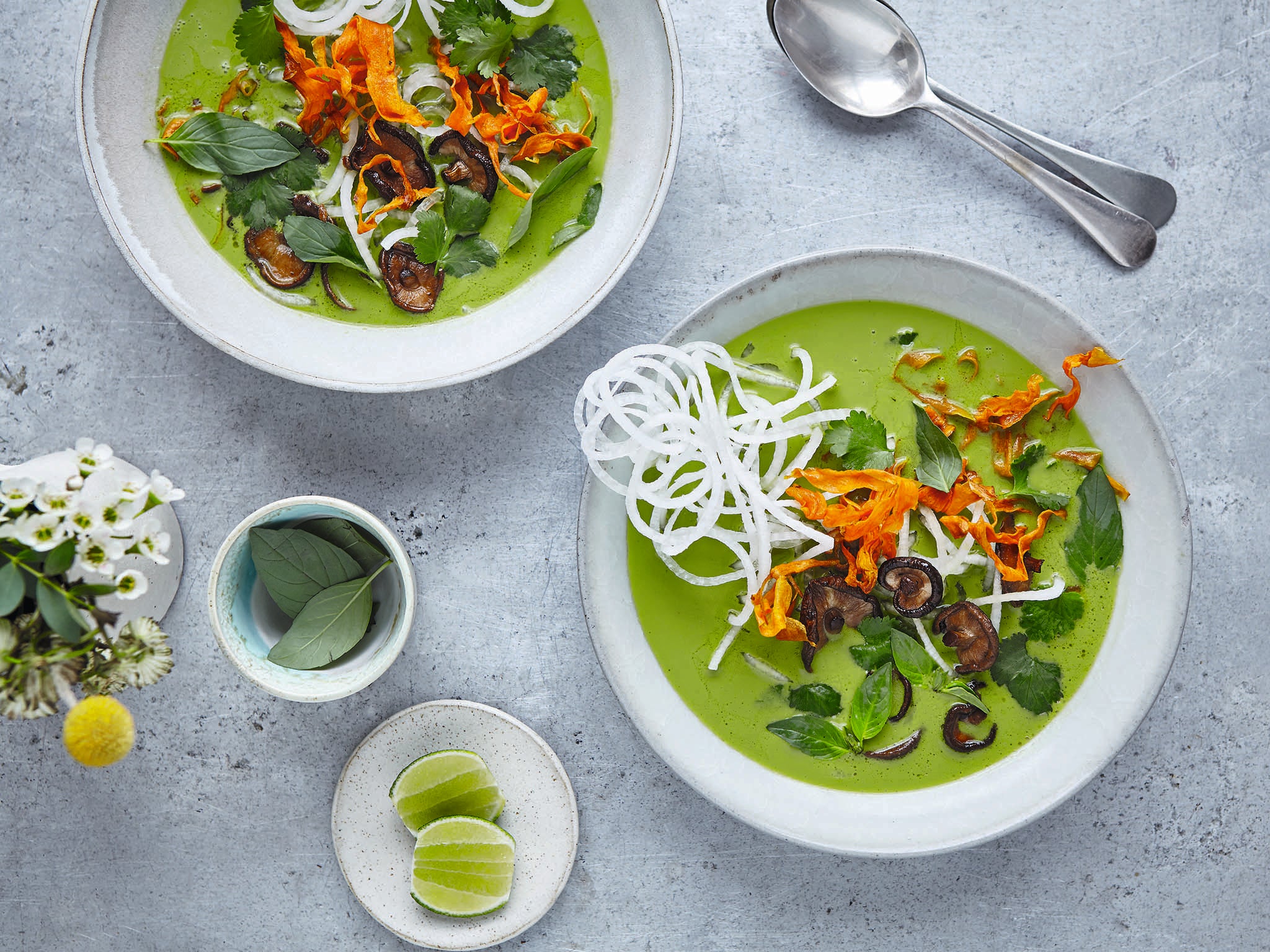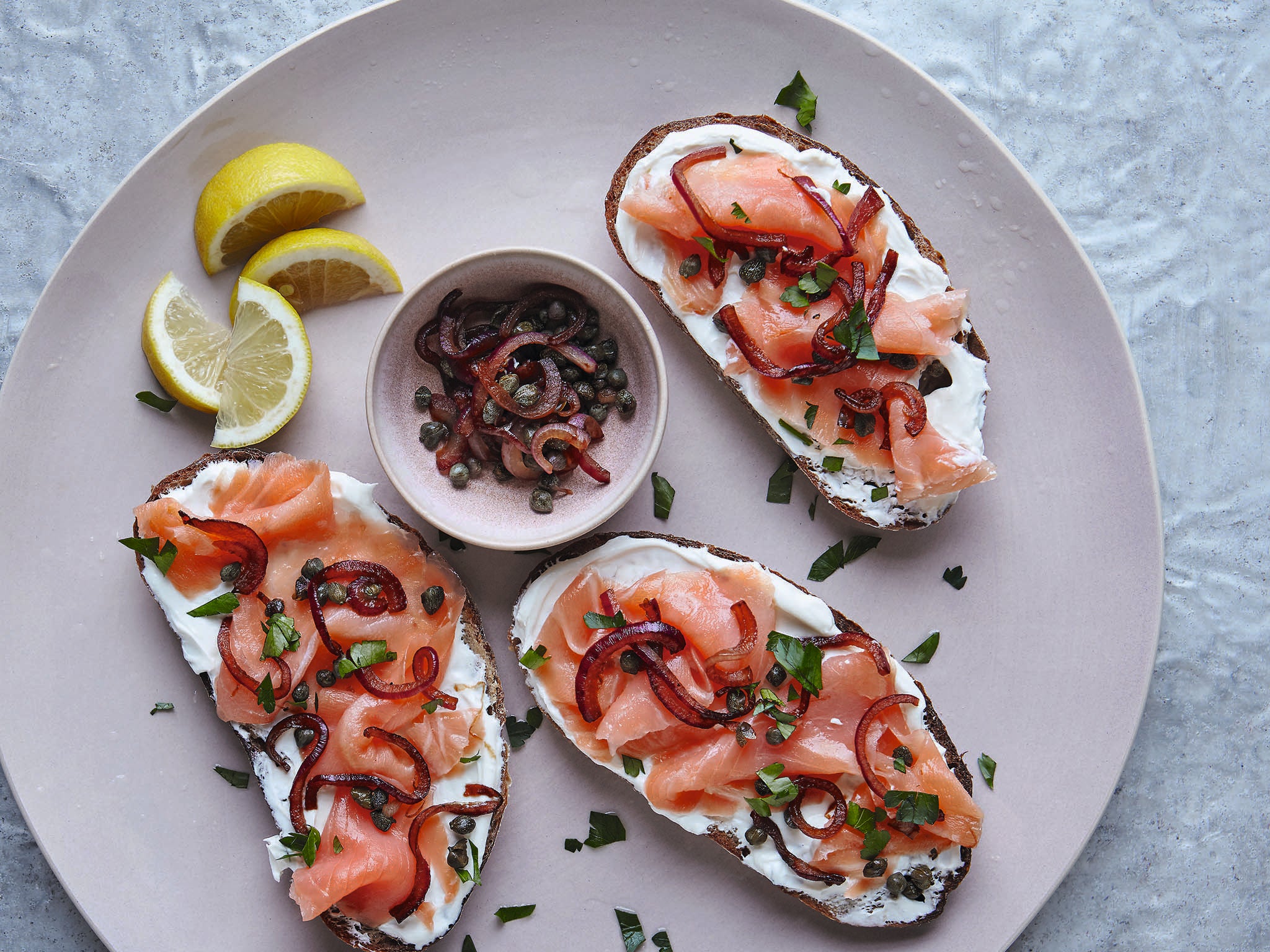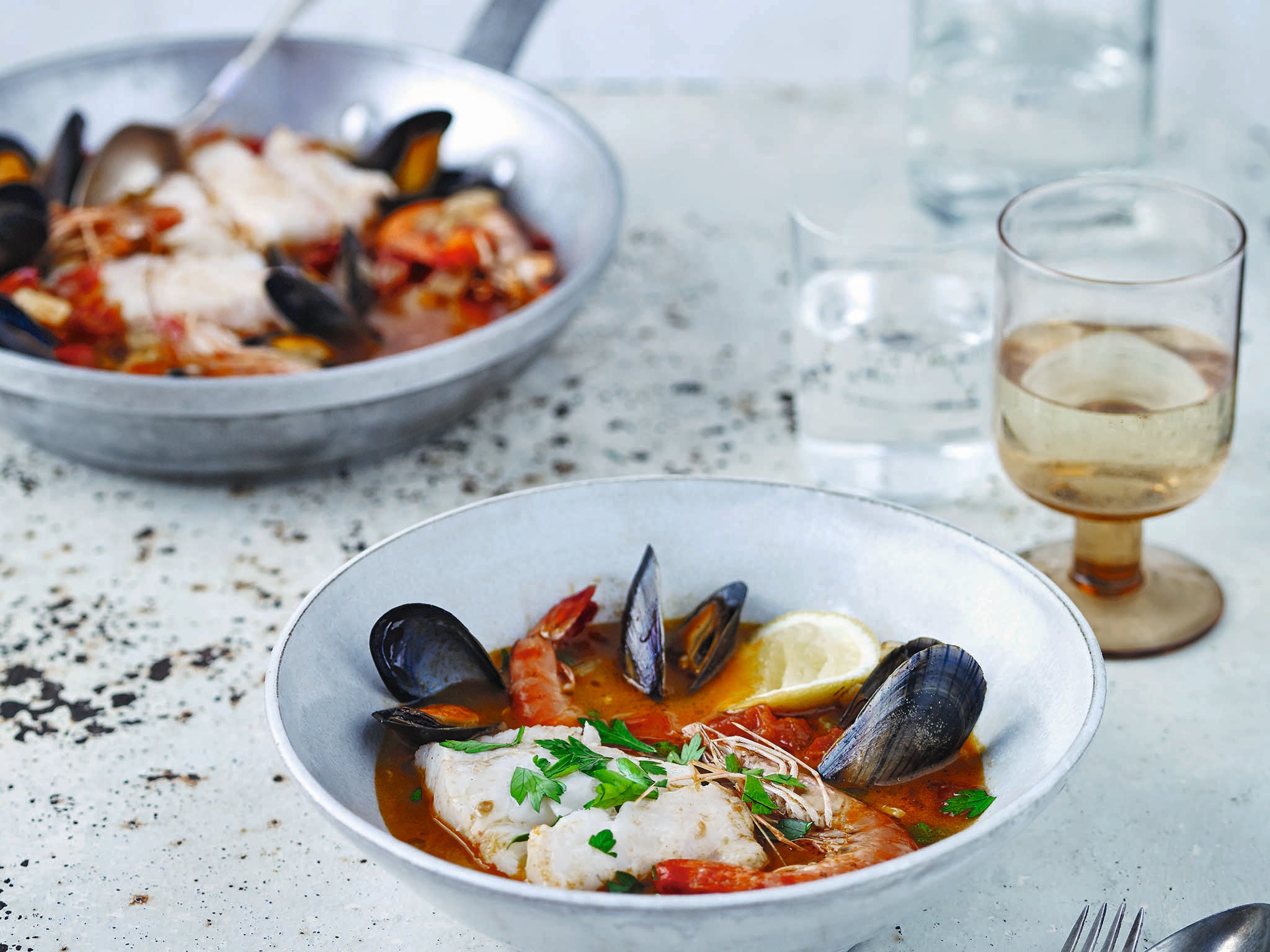'California Living + Eating' cookbook: Recipes from coriander and coconut noodle soup to smoked fish tartine

Coriander, coconut and daikon noodle soup
This was the centrepiece of my final project while studying at Matthew Kenney Culinary. I spent a week developing the recipe and amazed myself with the intensity of flavour and richness in texture of a raw vegan dish. There are various elements that need to be prepared before assembling the final dish, though none of them is terribly complicated. Such is the way with this kind of food; it requires technique, time and patience to build all the flavours. At Matthew Kenney Culinary we were lucky to work with all sorts of brilliant equipment like dehydrators and vacuum-sealers, but I’ve adapted this so it can be made in any kitchen, though it no longer qualifies as raw.
Prep: 1 hr
Cook 4 hrs
Serves 2
Coriander and coconut broth
2 shallots, quartered
2 celery stalks, halved
50g fresh ginger root, sliced
6 white peppercorns
½ tsp coriander seeds
½ tsp cumin seeds
Pinch of chilli (hot pepper) flakes
2 lemongrass stalks
8 lime leaves
2 garlic cloves, halved
2 litres (8 cups) water
100g (generous cup) desiccated (dried shredded) coconut
2-3 tbsp tamari
1-2 tsps maple syrup
Juice of ½-1 lime
30g coriander
Sweet potato crisps
1 small sweet potato, peeled
1 tbsp sunflower oil
1 shallot, thinly sliced
Tamari maple mushrooms
200g fresh shiitake mushrooms
2 tbsp tamari
1 tbsp maple syrup
1 tsp toasted sesame oil
To serve
1 daikon, peeled
Handful of coriander and Thai basil leaves
2 lime wedges
Preheat a fan oven to 130C (265F/gas 2). For the broth, put the shallot, celery, ginger, spices, lemongrass, lime leaves and garlic in a large casserole dish with the water. Cover and bake for 3 hours. Remove the casserole from the oven, uncover and cool completely.
Pass the broth through a sieve into a jug, discarding the aromatics – you should have just over 1 litre (4 cups). This can be done a day in advance, storing the broth in the refrigerator, then bringing it back to room temperature when needed. For the sweet potato crisps, use a vegetable peeler to pare long strips from the potato. Toss the strips with the oil and shallot and scatter in a roasting tray.
To make the tamari maple mushrooms, trim the shiitake stems, and halve any larger mushrooms. Toss in a small roasting tray with the tamari, maple syrup and sesame oil. Put the mushrooms and sweet potato in the oven. Roast for 30-40 minutes, turning both every 15 minutes, or until the sweet potato is crisp and the mushrooms have absorbed all the liquid. Pour the broth into a high-speed blender with the coconut and blitz until smooth. Add the tamari, maple syrup, lime and coriander and blitz again until as smooth as possible, then taste: add more sour (lime), sweet (maple syrup) and salt (tamari) to balance the flavour. Line a sieve with muslin (or paper towel) and set it over a large jug. Pour the broth through the sieve, pressing or squeezing to extract as much liquid as possible.
Spiralise or shred the daikon and place it in a large bowl of iced water for 5 minutes to crisp up. Gather all your other ingredients ready to build the bowls. Lift out the daikon, then pat it with kitchen towel to absorb as much water as possible. Divide the between 2 large, shallow bowls. Slowly pour the broth (give it a stir if it has separated) around the daikon into the base of the bowls. Arrange the mushrooms, sweet potato and shallot crisps over the top, scatter with the herbs, and finish each with a lime wedge.

Smoked fish tartine with charred caper and red onion relish
Red onion, smoked fish and cream cheese is a heavenly combination to me: it’s oily, salty, sharp and creamy. It’s also hard to execute badly, but I do think charring the capers and red onion adds a little extra flourish.
Prep: 10 mins
Cook: 5 mins
Serves 2
2 tbsp nonpareille capers, rinsed and drained
½ small red onion, thinly sliced
1 tsp sherry vinegar
½ tsp soft dark brown sugar
2 large slices of sourdough or rye bread
4 tbsp labneh or cream cheese
100g smoked salmon, trout or halibut
½ lemon, cut into wedges
Small handful of chopped flat-leaf parsley
Freshly ground black pepper
If the capers are wet, pat them dry on a piece of paper towel.
Heat a small frying pan (skillet) or saucepan over a medium-high heat.
Add the capers and onion and dry-fry them, tossing or stirring regularly, for about 2 minutes until charred in places. Tip in the vinegar and sugar and stir together; take off the heat and tip into a bowl.
Toast the bread. Spread the toast with the labneh or cream cheese, arrange the smoked fish over the top and spoon over the caper and red onion relish. Squeeze a little lemon juice over the top, scatter with parsley, grind over some black pepper and serve immediately.

Cioppino fisherman’s stew
Apparently, this fish stew was originally made by Italian immigrants who settled in San Francisco. After work, they would stop by the fishing boats on the wharf and collect any leftovers from the day’s catch to cook up at home. In San Francisco you’ll often find crab and scallops in the mix, but prawns, white fish and mussels are a more economical option. Along with fresh tomatoes, caramelised fennel and white wine they create a delicate and subtle fish stew. You can happily substitute dry vermouth for white wine, if you prefer. Serve this stew with few dollops of aioli or mayonnaise and plenty of crusty bread to mop up the juices.
Prep: 15 mins
Cook: 40 mins
Serves 4
1 tbsp olive oil
1 tbsp unsalted butter
2 onions, diced
1 fennel bulb, diced (fronds reserved and core discarded)
2 garlic cloves, sliced
2 fresh bay leaves
½ tsp sweet smoked paprika, plus extra to serve
100ml (½ cup) white wine
250g ripe tomatoes, roughly chopped
250ml (1 cup) fresh fish stock
4 x 100g fresh hake fillets (or any other firm white fish)
8 raw tiger prawns
150g mussels, cleaned and any open shells discarded
Lemon juice, to taste (optional), plus wedges
Handful of chopped flat-leaf parsley
Sea salt and freshly ground black pepper
Heat the oil and butter in a large saute pan or casserole dish over a medium-low heat, add the onions and fennel with a good pinch of salt and sweat for 5 minutes (don’t season again until you’ve added the seafood as it may be salty in itself). Add the garlic and bay and sweat gently for another 15-20 minutes, stirring regularly, until everything is soft, translucent and turning golden.
Add the paprika and fry for 1 more minute, then add the wine and simmer for 2-4 minutes to bubble off the alcohol. Add the tomatoes, fry for another 2-3 minutes, then add the fish stock to the dish and bring to a gentle simmer. (You can set the dish aside at this stage, then reheat when you’re ready to continue.)
Nestle the fish, prawns and mussels into the gently simmering sauce, grind over some black pepper and cover the pan with a lid (or use a sheet of kitchen foil topped with a large plate or chopping board). Uncover after 6 minutes and check everything is cooked through. If not, recover and check after another 2 minutes.

To serve, remove the lid and discard any unopened mussels. Check the seasoning: it may benefit from a little salt and a firm squeeze of lemon juice. Serve scattered with the parsley, the reserved chopped fennel fronds and some lemon wedges.
Notes on sweating vegetables: For this dish it really is worth taking your time over frying the onion, fennel and garlic. Frying gently over a low heat allows the vegetables to soften and turn translucent, before turning golden as their sugars caramelise. I tend to use a large frying pan (skillet) or saute pan with a wide base and a tight-fitting lid, covering the pan with a lid at the beginning if they start to colour too quickly. If you don’t have a lid, you can add a splash of water to the pan, which will help to soften the vegetables without colouring too quickly.
Extracted from ‘California: Living + Eating’ by Eleanor Maidment (Hardie Grant, £22) Photography © Nassima Rothacker
Join our commenting forum
Join thought-provoking conversations, follow other Independent readers and see their replies
Comments